State-of-the art Surgery centres in
Delhi-NCR | Madhya Pradesh | Haryana
Say Goodbye to Glasses with Lasik surgery
- Experienced surgeons
- Cost-effective
- One-day procedure
- A Dedicated TaCa dost


Say Goodbye to Glasses with Lasik surgery

Get rid from blurry vision
- Get rid of glasses
- One day surgery
- Highly qualified surgeons
- A dedicated TaCa dost

With the help of expert Ophthalmologists
Lasik Surgery
Lasik is a prominent technique for treating nearsightedness, farsightedness, and astigmatism in patients. It is one of the best vision-correcting techniques that involves reshaping the cornea of your eye so that light concentrates on the retina in the rear.
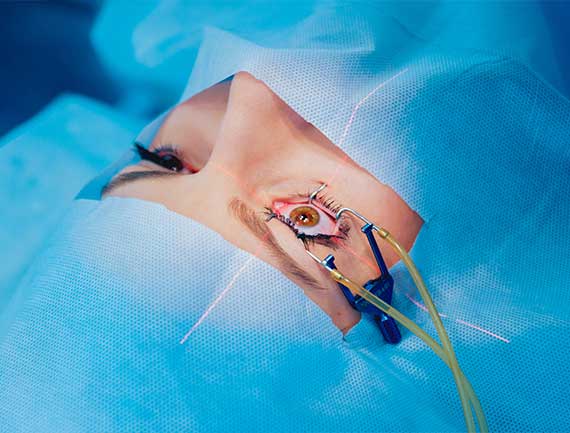
Connect with TaCa Dost today
Lasik- Condition
The most well-known and extensively utilized laser refractive surgery for vision correction is LASIK eye surgery. LASIK is a laser vision correction technique that can be used in place of glasses or contact lenses. LASIK surgery uses a special cutting laser to precisely alter the shape of the dome-shaped translucent tissue at the front of your eye (cornea) to improve vision.
In eyes with proper vision, the cornea bends (refracts) light exactly onto the retina in the back of the eye. In nearsightedness (myopia), farsightedness (hyperopia), or astigmatism, the light is bent wrongly, resulting in decreased vision. Glasses or contact lenses can be used to correct vision, but reshaping the cornea will also provide the proper refraction.
Book An Appointment

+91-9016239239
+91-9319880099

TaCa Dost
At TaCa Healthcare we align a dedicated TaCa dost with each and every Lasik patient so that you don't have to worry about formalities & paperwork at hospital.

Affordable Cost
Taca Healthcare offers Treatment of Lasik at very affordable rate. We also provide insurance paperwork support. TaCa Healthcare is working on a Mission to make Lasik treatment affordable in India.

Insurance Support
Depending upon your insurance provider Lasik treatment is covered up to 100%. TaCa Healthcare ensures Hassle free treatment experience that too at very low cost.

30 minutes
Lasik procedure takes a maximum of 30 minutes to complete. Lasik treatment is a daycare procedure wherein Patient can get discharged and go home early.
Lasik - Symptoms
 Nearsightedness - It is a condition in which a person's vision is blurred (myopia). When your eyeball is somewhat longer than normal or the cornea curves too sharply, light rays focus in front of the retina and obstruct distant vision. Objects that are close to you can be plainly seen, while those that are further away cannot.
Nearsightedness - It is a condition in which a person's vision is blurred (myopia). When your eyeball is somewhat longer than normal or the cornea curves too sharply, light rays focus in front of the retina and obstruct distant vision. Objects that are close to you can be plainly seen, while those that are further away cannot.
Seeing things clearly (hyperopia) - Light focuses behind the retina instead of on it when you have a shorter than usual eyeball or a cornea that is overly flat. In both the near and far distances, this results in blurry vision.
Astigmatism - When the cornea curves or flattens unevenly, astigmatism arises, altering the focus of near and far vision.
Connect with TaCa Dost today
Lasik - Treatments
 Patients who undergo a thorough examination prior to surgery to ensure that they are suitable candidates for the procedure reap the greatest long-term benefits from LASIK.
Patients who undergo a thorough examination prior to surgery to ensure that they are suitable candidates for the procedure reap the greatest long-term benefits from LASIK.
If you wear contact lenses, which may change the structure of your cornea, you must stop wearing them for at least a few weeks before your evaluation and surgery and only wear your glasses. Your doctor will offer you specific guidelines based on the type of contacts you use and how long you've been wearing contacts.
Your eye doctor will determine which portions of your cornea need to be reshaped and calculate the amount of tissue that has to be removed.
Your cornea's shape, contour, thickness, and anomalies will also be evaluated by your eye doctor. Your eye doctor will determine which portions of your cornea need to be reshaped and calculate the amount of tissue that has to be removed.
Doctors frequently use wavefront-guided technology to thoroughly evaluate your eye before LASIK surgery. A scanner makes a highly comprehensive chart of your eye, comparable to a topographic map, in this test. Your doctor will go through the risks and benefits of LASIK surgery, as well as what to expect before and after the procedure and answer any questions you may have.
Lasik - Surgical Procedures
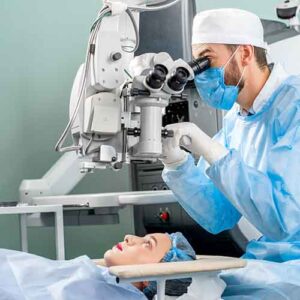 LASIK generally takes 30 minutes or less to get completed. For the procedure, you will be laying on your back in a reclining chair. After administering numbing drops in your eye, your doctor will use equipment to hold your eyelids open.
LASIK generally takes 30 minutes or less to get completed. For the procedure, you will be laying on your back in a reclining chair. After administering numbing drops in your eye, your doctor will use equipment to hold your eyelids open.
A traction ring placed on your eye shortly before the corneal flap is split can cause a pressure sensation and minor vision impairment. The eye surgeon removes a small hinged flap from the front of your eye using a sharp blade or a cutting laser. By folding back the flap, your doctor can get to the part of your cornea that needs to be changed.
Your eye surgeon reshapes sections of your cornea with a controlled laser. Each pulse of the laser beam removes a fewer amount of corneal tissue. After reshaping the cornea, the surgeon repositions the flap. The flap usually heals without the need for sutures.
When the procedure will take place, your doctor will ask you to concentrate on a single point of light. You can keep your eye fixed while the laser reshapes your cornea by staring at this light. As the laser eliminates your corneal tissue, you may notice a unique odor.
Lasik - Recovery & Post Operative Care
 Your eye may itch or burn just after surgery. Your vision will most likely be hazy. In most cases, there will be little pain, and your vision will return fast. For several hours after the treatment, you may be given pain medicine or eye drops to make you comfortable. Your eye doctor may suggest that you wear a shield over your eye at night until it recovers.
Your eye may itch or burn just after surgery. Your vision will most likely be hazy. In most cases, there will be little pain, and your vision will return fast. For several hours after the treatment, you may be given pain medicine or eye drops to make you comfortable. Your eye doctor may suggest that you wear a shield over your eye at night until it recovers.
You will be able to see after surgery, however, your vision will not be perfect right away. After surgery, it takes 2-3 months for your eye to heal and your vision to adjust. Your odds of seeing better after surgery are partly determined by how good your eyesight was prior to surgery.
1-2 days after surgery, you'll have a follow-up appointment with your eye doctor. He or she will inspect your eye to see how it is healing and to rule out any problems. Other follow-up appointments should be planned as directed by your doctor throughout the first six months following surgery.
It can take a few weeks for you to restart applying eye makeup. You may also need to wait a few weeks before returning to intense contact sports, swimming, or hot baths.
Connect with TaCa Dost today
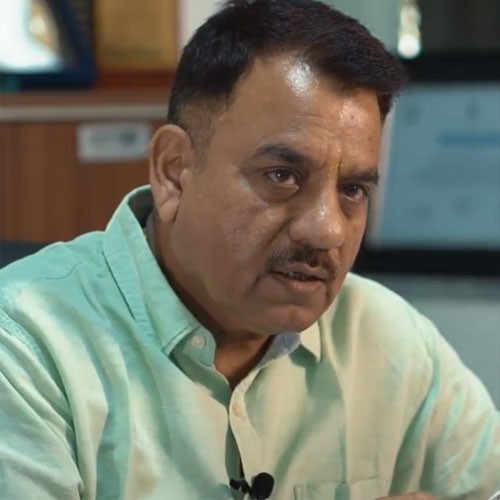
Dr Pawan Sthapak
Senior Ophthalmologist
Dr. Pawan Sthapak is a Leading of ophthalmologist working as director of Jan Jyoti Super speciality eye Hospital in Jabalpur Madhya Pradesh India. He did his MBBS from Netaji Subash Chandra Bose Medical College in 1987, post that he completed DOMS In Opthalmology from the same institution. He completed his masters in surgery (MS Surgery) ophthalmology from Lugansk State Medical University. He has more than 29 years of rich experience and has performed more than 35,000 eye surgeries so far.
All You Want To Know About Lasik
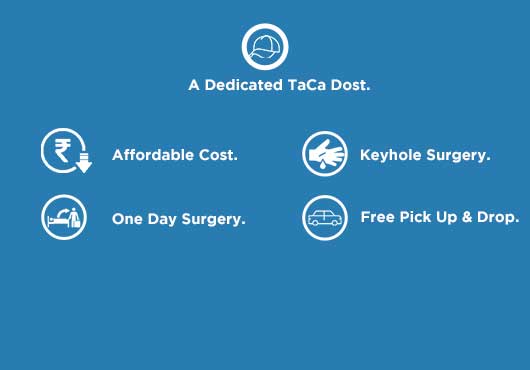
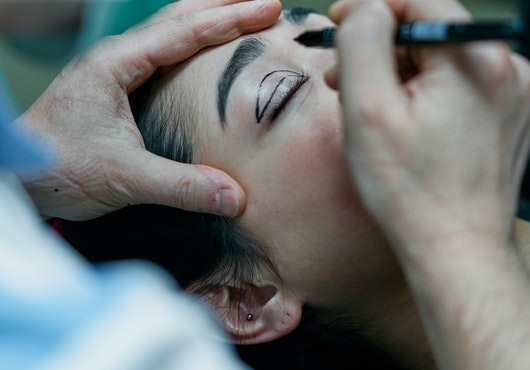
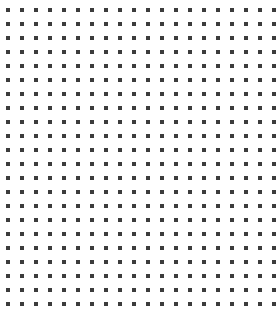
FAQs
Yes LASIK can be detected by slit-lamp examination
Most LASIK eye doctors believe that the age range of 25-40 is ideal for LASIK eye surgery candidacy for a variety of reasons. By the age of 25, prescriptions for eyeglasses and contact lenses have most likely stabilized.
Apply a warm compress to the area. Putting a warm, wet compress to your eyes encourages your eyelids to produce more lipids, which can improve the quality of your tears and relieve some dry eye symptoms.
Consequences that result in visual loss are quite rare. However, certain LASIK eye surgery side effects, such as dry eyes and temporary vision difficulties like glare, are very typical. These normally go away after a few weeks or months, and just a few people think they're a long-term issue.
Dry Eyes - After LASIK surgery, tear production is temporarily reduced. For the first six months or longer after surgery, your eyes may feel dry. Dry eyes might impair the quality of your eyesight. Your eye doctor may advise you to use eyedrops for dry eyes. If your eyes are really dry, you may need to have special plugs implanted into your tear ducts to prevent your tears from draining away from the surface of your eyes. Halos and double vision - After surgery, you may have trouble seeing at night, which normally lasts a few days to a few weeks. Increased light sensitivity, glare, halos surrounding bright lights, or double vision are all possible symptoms. Even if you have a good visual result under conventional testing conditions, your eyesight in dim light (such as at dusk or in fog) may be degraded to a larger extent after surgery than before.
Undercorrections - You won't obtain the sharper vision outcomes you want if the laser removes too little tissue from your eye. Within a year, you may require another LASIK treatment to remove additional tissue.
Overcorrections- It's also conceivable that the laser will burn away too much tissue in your eye. Astigmatism -Uneven tissue loss might result in astigmatism. Problems with the flaps - Folding back or removing the flap from the front of your eye during surgery might lead to infections and excessive tears. The outermost corneal tissue layer beneath the flap may form improperly throughout the healing process.
Regression- When your vision gradually returns to your original prescription, this is known as regression. This is a less prevalent problem.
Changes in vision or loss of vision - Surgical complications can cause eyesight loss in rare cases. There are chances that some people might not be able to see as clearly as they previously did.
Get free consultation with top surgeons
For an elective surgery in mind, connect with us today and we will help you connect with best surgeons of various medical specialities and you will get free first consultation or even a second opinion
